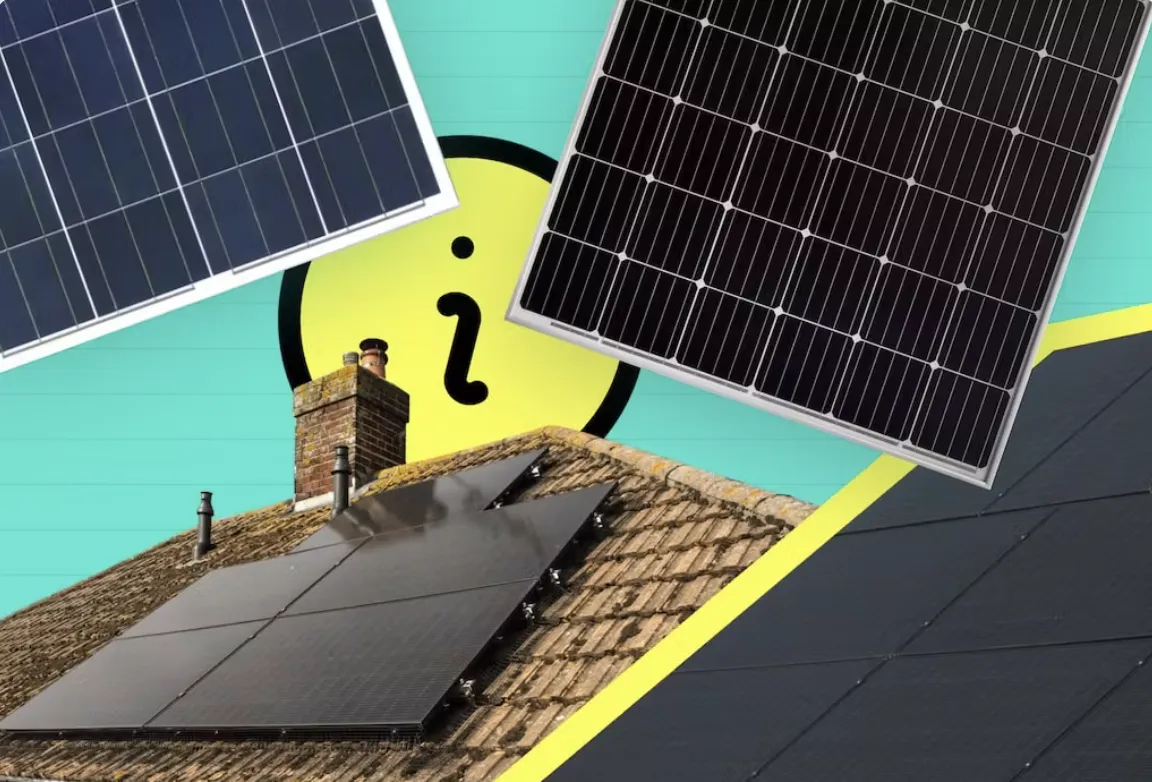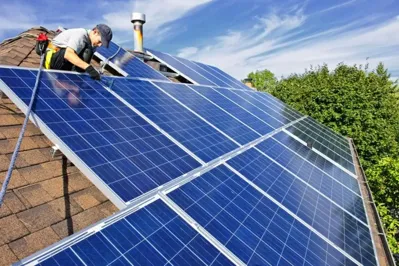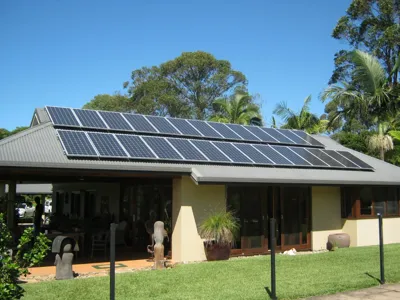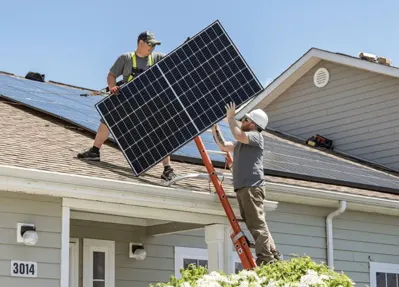How to Take Advantage of Solar Incentive Programs in the U.S. to Get Free Solar Panels: A Win-Win for the Environment and Your Wallet
As environmental awareness grows and energy costs continue to rise, solar power is becoming the choice for more and more American homes and businesses. However, for many households, the initial investment in solar panels can still be a significant barrier. Fortunately, solar incentive programs in the United States (Solar Incentive Programs) make solar power more affordable through subsidies, tax incentives, and even free installations. With these programs, residents can not only reduce their electricity bills but also increase the value of their homes and contribute to environmental sustainability.

The Basics of Solar Incentive Programs
Solar incentive programs are initiatives launched by governments and private companies to help U.S. residents reduce the costs of installing solar panels by offering subsidies, tax incentives, and zero-interest loans. Some states and cities have also rolled out “free solar panel installation” programs, meaning eligible residents can enjoy solar panel installations at no cost.
These programs are typically managed jointly by the federal government, state governments, and local utilities, with participating energy companies covering the cost of installation and equipment. These incentives help households save on electricity bills while promoting the widespread adoption of solar power, thus accelerating the transition to clean energy.
Specific Benefits of Solar Incentive Programs
Lower Electricity Bills One of the main advantages of solar panels is their ability to significantly reduce household electricity bills. In many regions, especially those with abundant sunlight, solar panels can provide enough power to meet a home’s energy needs, with solar power used during the day and stored energy for use at night. For areas with high electricity rates, solar panels can greatly reduce monthly electricity costs.
Increase in Home Value Solar panels do more than just save on electricity—they can also increase a home’s market value. According to a study by Zillow, homes with solar systems generally sell for higher prices. Potential buyers are increasingly inclined to purchase homes that help them lower their long-term energy costs, making the installation of solar panels a smart investment choice.
Environmental Benefits Solar energy is a clean and renewable power source, and using solar panels can significantly reduce greenhouse gas emissions. In the context of global climate change, more people are choosing solar power to contribute to environmental protection by reducing their reliance on traditional energy sources.
How to Apply for Free Solar Panel Installation
So, how can you take advantage of solar incentive programs to get free solar panel installations? Here are the steps you need to follow:
Step 1: Learn About Solar Incentive Programs in Your Area
Solar incentive programs vary in detail across U.S. states and local governments, so the first step is to find out if your area offers solar incentives. For example, states like California, New York, and New Jersey actively promote green energy and offer free solar panel installations through government subsidies or partnerships with energy companies.
You can visit local utility or government websites to check specific details about solar incentive programs. You can also contact solar companies to inquire about eligibility for free installation programs.
Step 2: Check if Your Roof Is Suitable for Solar Panel Installation
Solar panels require adequate sunlight to function efficiently, so your roof needs to meet certain conditions. The orientation, angle, and the presence of obstacles like trees or buildings around your home will all affect the effectiveness of a solar system.
Solar companies usually send professionals to assess your roof. If your roof isn’t suitable for solar panel installation, you may need to make modifications or consider alternative energy solutions.
Step 3: Submit Your Application and Provide Necessary Documents
Once it’s confirmed that your roof is suitable for solar panel installation, the next step is to submit an application. Generally, you will need to provide the following information:
· Household Income: Some programs are specifically designed for low-income families, so you may need to provide tax returns or proof of income.
· Home Information: You’ll need to provide basic information about your home, such as address, year of construction, and roof structure.
· Energy Bills: The utility company may ask you to submit recent energy bills to assess your electricity usage.
Depending on the incentive program, the review process may take a few weeks.
Step 4: Installation of Solar Panels
Once your application is approved, you’ll receive the opportunity to have solar panels installed. In most cases, the solar company will cover all installation costs, including equipment, labor, and materials. The installation process typically takes 1 to 3 days, depending on the size of the system and the condition of the roof.
After installation, your home will begin to benefit from the economic advantages of solar energy, and your electricity bills will significantly decrease. Furthermore, the solar system will provide stable power for 20 or more years, further enhancing your home's energy independence.
Step 5: Enjoy the Dual Benefits of Energy Savings and Environmental Impact
After installing solar panels, you’ll not only enjoy the financial savings on electricity but also contribute to environmental sustainability. As your solar system runs, your household will gradually reduce reliance on traditional energy sources, cut carbon emissions, and help mitigate climate change.

Case Study: A Family Benefiting from Solar Incentive Programs
For example, Linda, a single mother in Los Angeles, applied for California’s solar incentive program and successfully received free solar panel installation. After installation, her family’s electricity bills decreased by more than 60%, and the market value of her home also increased. Linda said, “I never expected that solar panels would not only save me money but also make my home more eco-friendly. It really is an investment worth making!”
Conclusion: Solar Incentive Programs Make Green Energy Accessible
In the United States, solar incentive programs offer a rare opportunity for more households to adopt solar energy. Through these programs, residents can enjoy free solar panel installations, lower electricity bills over time, increase their home value, and contribute to environmental sustainability. Whether you're looking to reduce energy costs or cut down on carbon emissions, solar energy is a worthwhile investment.
If you also want to benefit from solar energy, take action now—learn about the solar incentive programs in your area, seize the opportunity for free solar installation, and turn your home into a green energy showcase.
Featured Articles
 The Best Rebates and Credits for Solar PanelsSolar panels are way more affordable than they used to be thanks to these government grants and discount programs.
The Best Rebates and Credits for Solar PanelsSolar panels are way more affordable than they used to be thanks to these government grants and discount programs. Green Environment Popularization and the Rise of Home Solar PanelsIn recent years, the push for a greener environment has gained significant momentum, leading to an increase in the adoption of home solar panels. This shift not only contributes to environmental sustainability but also offers numerous financial benefits to homeowners. As concerns about climate change and rising energy costs continue to grow, solar energy has emerged as a viable solution for many households worldwide.
Green Environment Popularization and the Rise of Home Solar PanelsIn recent years, the push for a greener environment has gained significant momentum, leading to an increase in the adoption of home solar panels. This shift not only contributes to environmental sustainability but also offers numerous financial benefits to homeowners. As concerns about climate change and rising energy costs continue to grow, solar energy has emerged as a viable solution for many households worldwide. United States Mass Hiring Solar Panel Installers: High Salary, No Experience RequiredThe solar energy industry in the United States is experiencing an unprecedented boom. With the rising demand for clean, renewable energy and growing concerns over climate change, more households, businesses, and even factories are turning to solar power. This shift has led to a significant shortage of skilled workers in solar panel installation, prompting numerous companies to ramp up recruitment and training efforts. What makes this opportunity even more appealing is that many of these positions do not require previous experience. In fact, the growing demand, along with government subsidies and incentives, makes this an ideal time to enter the solar energy field.
United States Mass Hiring Solar Panel Installers: High Salary, No Experience RequiredThe solar energy industry in the United States is experiencing an unprecedented boom. With the rising demand for clean, renewable energy and growing concerns over climate change, more households, businesses, and even factories are turning to solar power. This shift has led to a significant shortage of skilled workers in solar panel installation, prompting numerous companies to ramp up recruitment and training efforts. What makes this opportunity even more appealing is that many of these positions do not require previous experience. In fact, the growing demand, along with government subsidies and incentives, makes this an ideal time to enter the solar energy field.